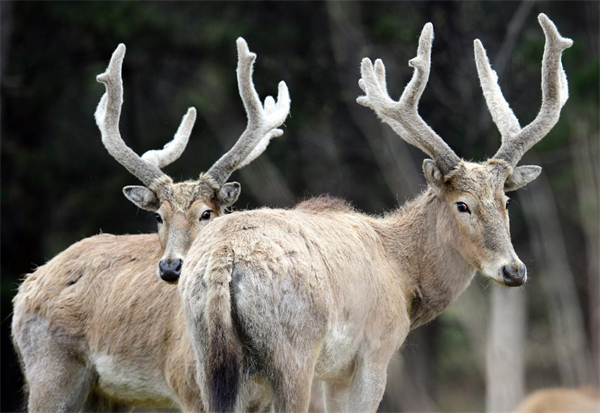Twelve milu deer born in Inner Mongolia nature reserve

Wild milu deer in Daqing Mountain National Nature Reserve. [Photo/IC]
The Daqing Mountain National Nature Reserve in Inner Mongolia has welcomed a new generation of life, with twelve healthy milu deer fawns born in the Baishitougou Management Station area, bringing fresh hope to conservationists and wildlife enthusiasts alike.
This marks a significant milestone in the reserve's ongoing milu deer rewilding project and highlights the continued success of local ecological restoration and biodiversity protection efforts.
"We took extra measures to ensure a safe birthing process for the pregnant females," said the station's director. "Staff members closely monitored the milu deer's health and strictly minimized human interference. All newborn fawns are in good condition and have started to follow the herd in their natural environment."
The Daqing Mountain National Nature Reserve features a rich mosaic of habitats, including mountainous forests and valley wetlands, offering an ideal setting for milu deer to thrive with ample food, water, and shelter.

Daqing Mountain National Nature Reserve's milu deer population is growing. [Photo/IC]
In September 2021, 27 milu deer were released into the reserve's Zhaoge Valley. A year later, nine fawns were born, marking the first natural reproduction of rewilded milu deer in this region and establishing the first wild milu deer population in the transitional zone between northern China and the Mongolian Plateau.
In 2023 and 2024, another 21 fawns were born. The growing population, now exceeding 60 individuals, reflects the suitability of the local ecosystem for the species' long-term survival.
To ensure the health and safety of the herd, the reserve employs an integrated monitoring system combining BeiDou satellite tracking collars, drones, and ground-based observation. This enables continuous monitoring of the deer's movements, behaviors, and habitat conditions.
Over the past three years, the reserve has also carried out extensive scientific research on the milu deer, studying their habitat preferences, reproductive patterns, activity rhythms, feeding behavior, and overall health. These efforts provide vital data for the sustainable management and expansion of China's first wild milu deer population in this region.

Milu deer in Daqing Mountain National Nature Reserve. [Photo/IC]



 Print
Print Mail
Mail





